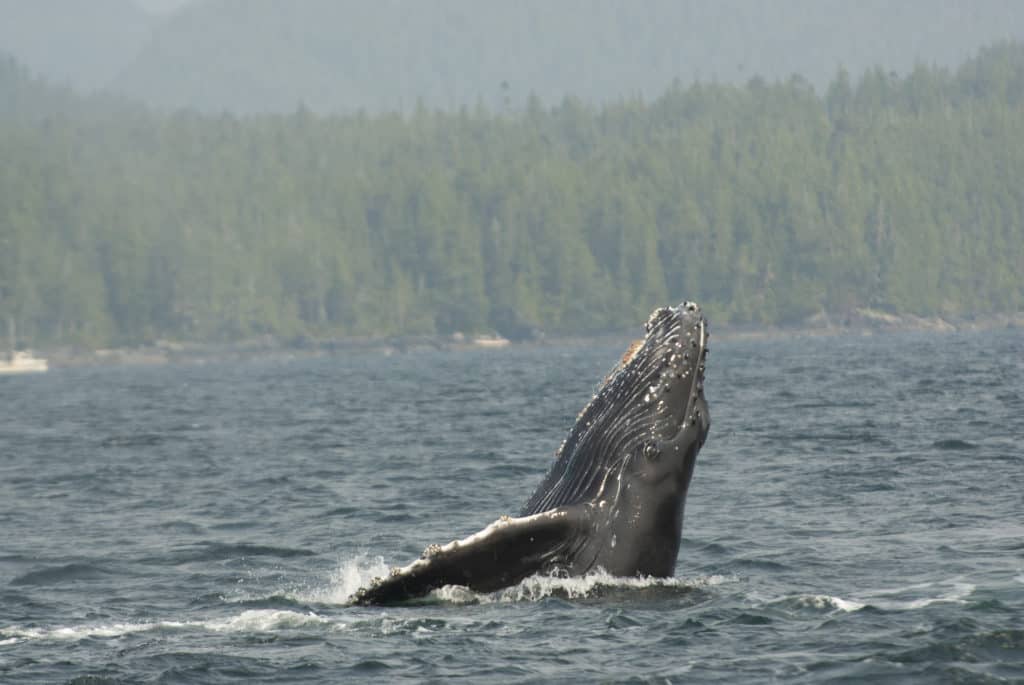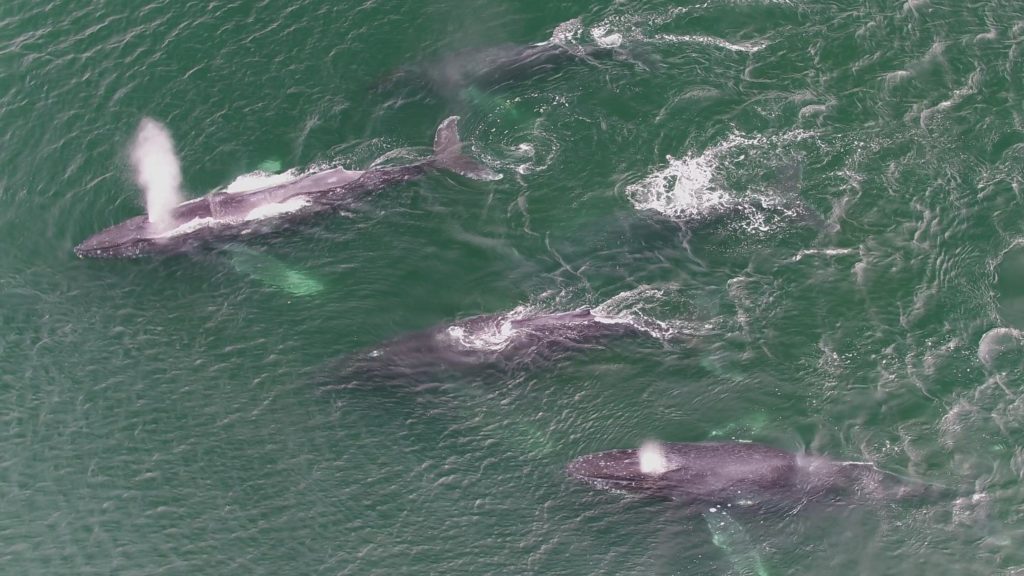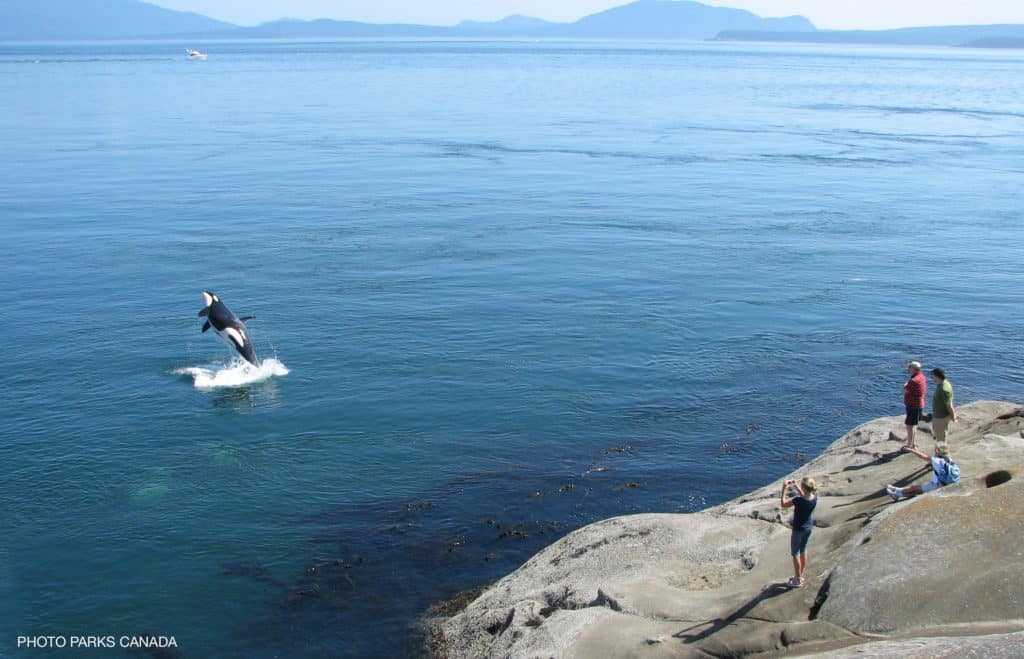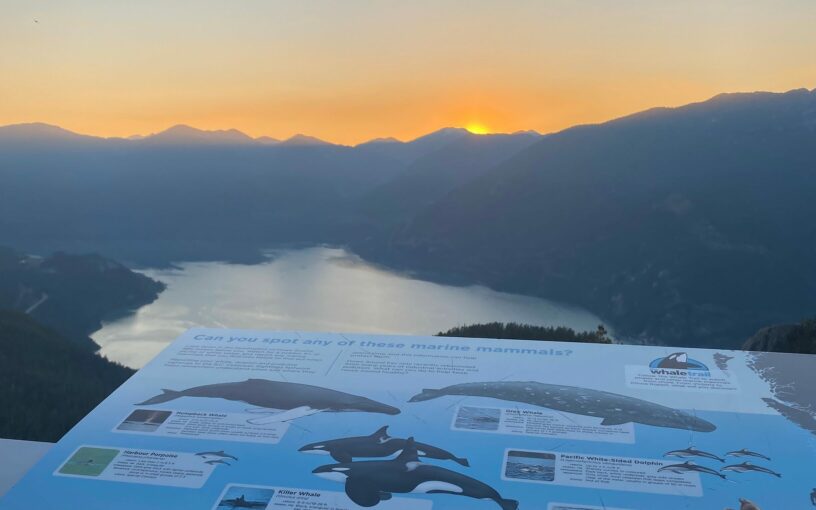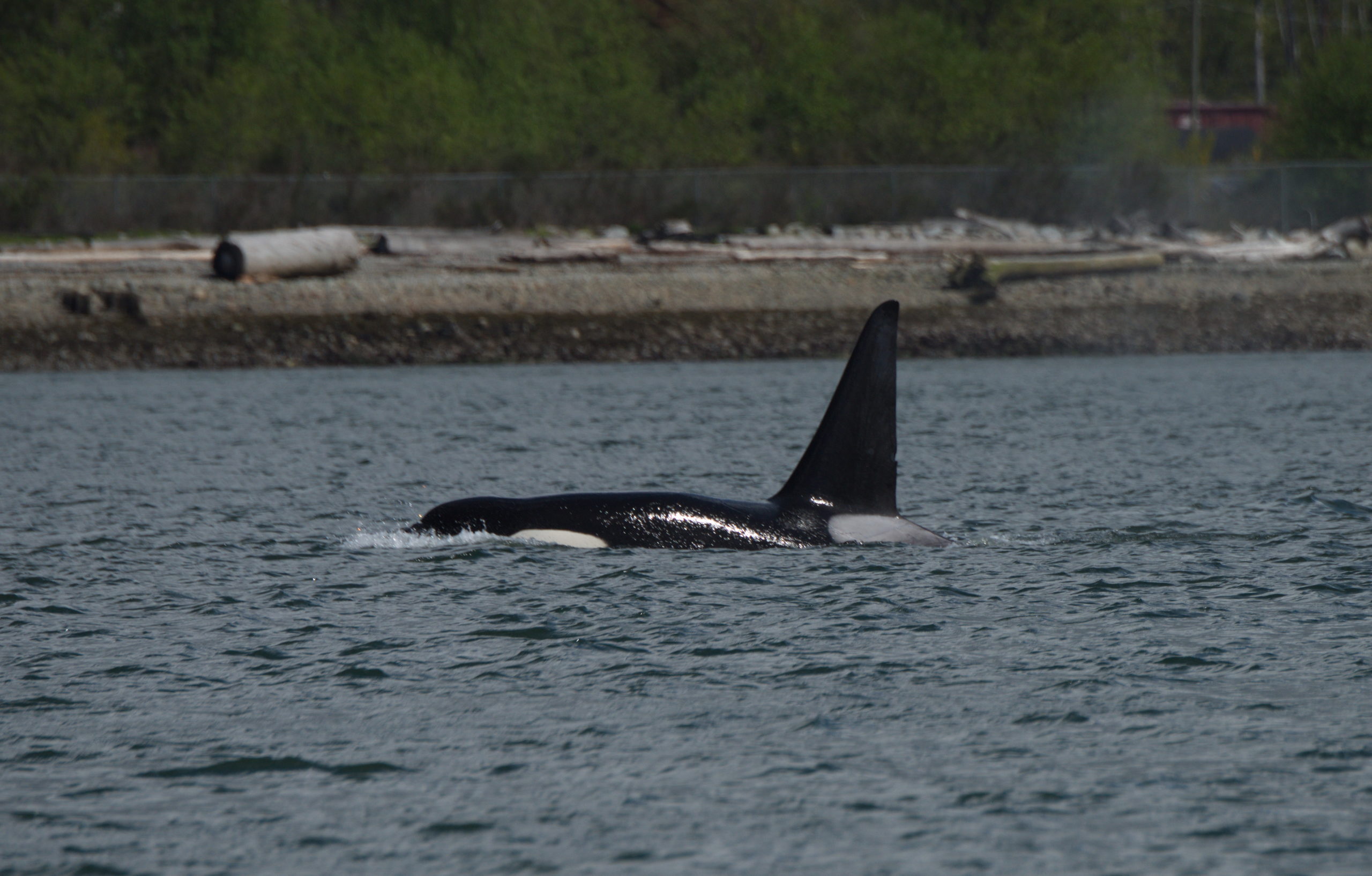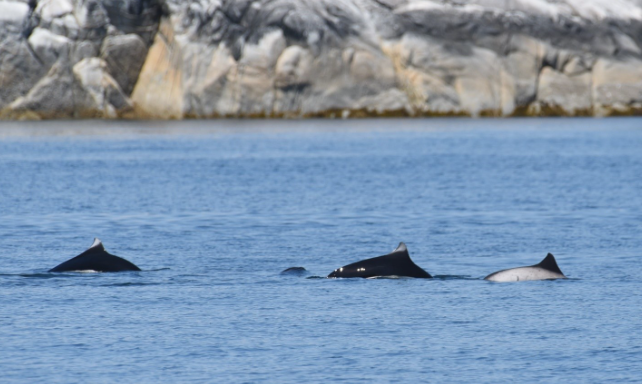
Notes from the Field: Porpoise Hybridization!
Ocean Wise has a team of researchers who regularly go out into the field to monitor whale health and observe their behaviour and migration patterns. Research Manager Karina Dracott writes about a unique day in the field.
In Chatham Sound in Northern British Columbia on a beautiful and remarkably fog-free day back in July, the Ocean Wise field team encountered a rare sight: a hybrid porpoise! Natural hybridization refers to two different species who have bred to create offspring. On land, examples include mules and ligers! Hybridization has been documented in many different pairs of cetacean species. But in this case, we found ourselves doing a double-take at a large group of Dall’s porpoises, joined closely by a very uniquely coloured porpoise.

As you can see in the image above, one of these porpoises is not like the others! This hybrid is a cross between a female Dall’s porpoise and a male pacific harbour porpoise. Harbour porpoise have a mating strategy called “sperm competition”, which is reflected in the energetic pursuit of numerous females by individual male harbour porpoises. This is part of the reason why these hybrids exist. Due to this, Dall’s porpoises tend to be the mothers of these hybrids.
Most of the time pacific harbour porpoises and Dall’s don’t mingle. However, there have been more documented sightings of porpoise hybrids in recent decades, including hybrids who have had their own offspring! In fact, it is estimated that up to 1-2% of the Dall’s porpoise population in the southern gulf islands are made up of hybrid individuals. Research tells us that species pairs that share a greater number of traits (like vocalization frequency and body size) are more likely to hybridize, especially if they are genetically and physiologically compatible and are found in the same areas.
Another cause of increasing hybridization between these two species is disturbance to harbour porpoise habitats. Harbour porpoises are typically found close to shore, which are areas that have high human activity and vessel traffic. Increasing disturbance from humans in their home waters may be driving these animals to roam further from shore to deeper waters, where Dall’s porpoises tend to spend their time.
At the end of the day, many questions remain unanswered about hybrid porpoises, especially regarding their distribution throughout the waters of British Columbia. More data is needed to determine if hybrid porpoises are more common in certain areas of the coast or if observers in other areas are not aware they are seeing hybrid porpoises.
Understanding how many hybrid porpoises there are and where they are found is valuable for us because it helps us learn about the population structure of porpoises throughout BC, which can inform management decisions. Due to their close proximity to populated areas, harbour porpoises in particular have a higher probability of exposure to human-made activities. This can make them useful sentinels for addressing ecosystem health and documenting increasing human disturbances.
You can help us by reporting any odd-looking porpoises (or any other whale, dolphin, or porpoise) to the sightings network using the WhaleReport App. We are also interested in any photos of hybrid porpoises you may take. If you aren’t sure, take a photo and share it with us!
References:
Willis, P.M., B.J. Crespi, L.M. Dill, R.W. Baird and M.B. Hanson. 2004. Natural hybridization between Dall’s porpoises (Phocoenoides dalli) and harbour porpoises (Phocoena phocoena). Canadian Journal of Zoology, 82: 828-834.
Crossman, C.A. Talyor, E.B., and Barett-Lennard, L.G (2016). Hybridization in the Cetacea: widespread occurrence and associated morphological, behavioral, and ecological factors. Ecology and Evolution, 6(5): 1293-1303. doi: 10.1002/ece3.1913
Posted December 22, 2023 by Rosemary Newton
